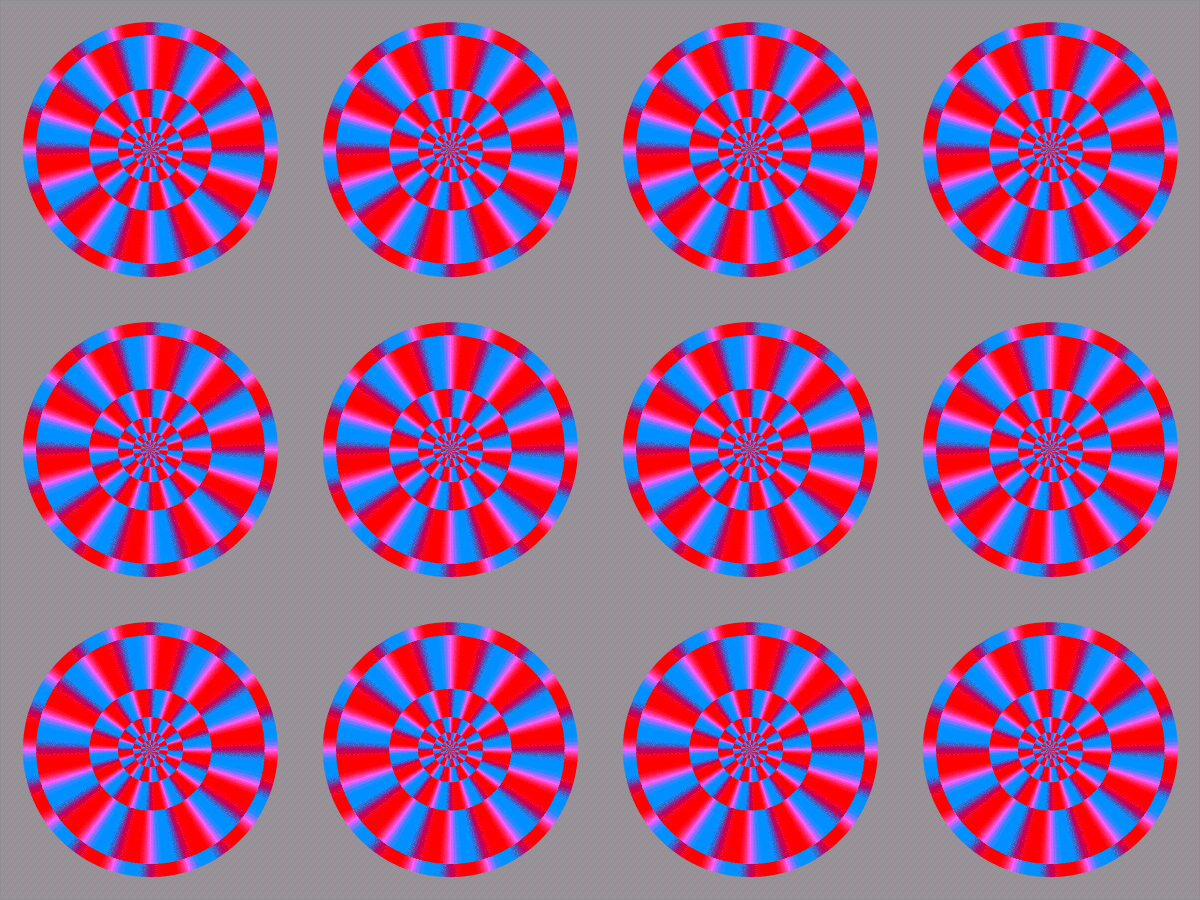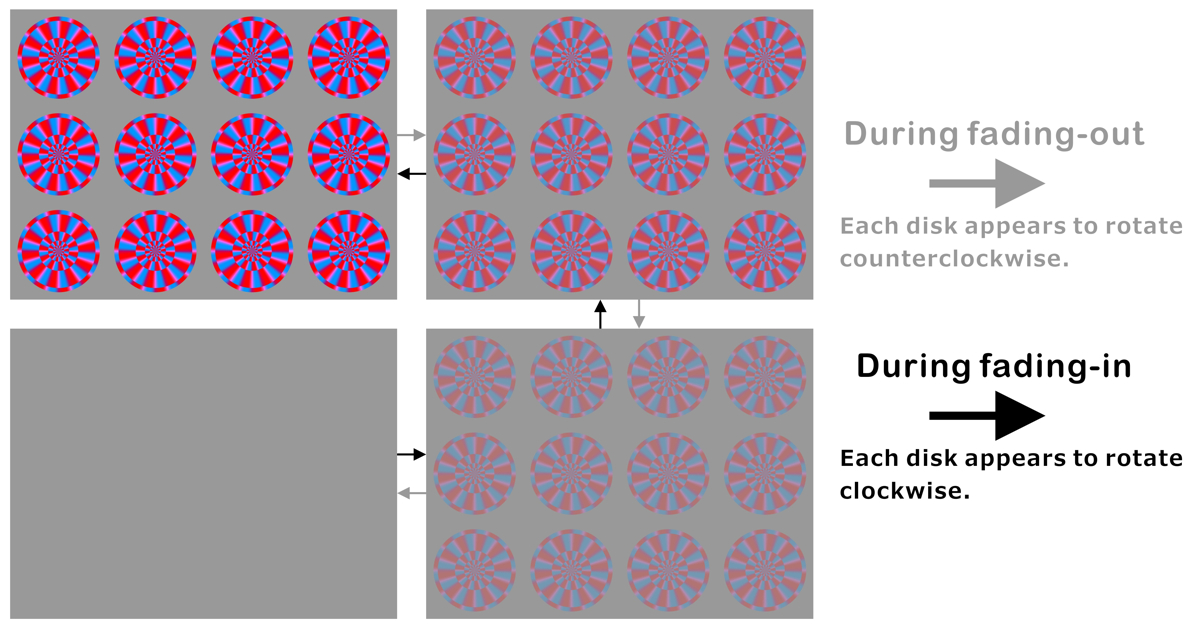<O3-3-7> July 31, 2019, 16:30–16:45
APCV2019, Ritsumeikan University, Ibaraki, Osaka, Japan
The effect of color temperature on the color-dependent Fraser-Wilcox illusion
Akiyoshi Kitaoka (Ritsumeikan University, Osaka, Japan)
since July 27, 2019 Handout
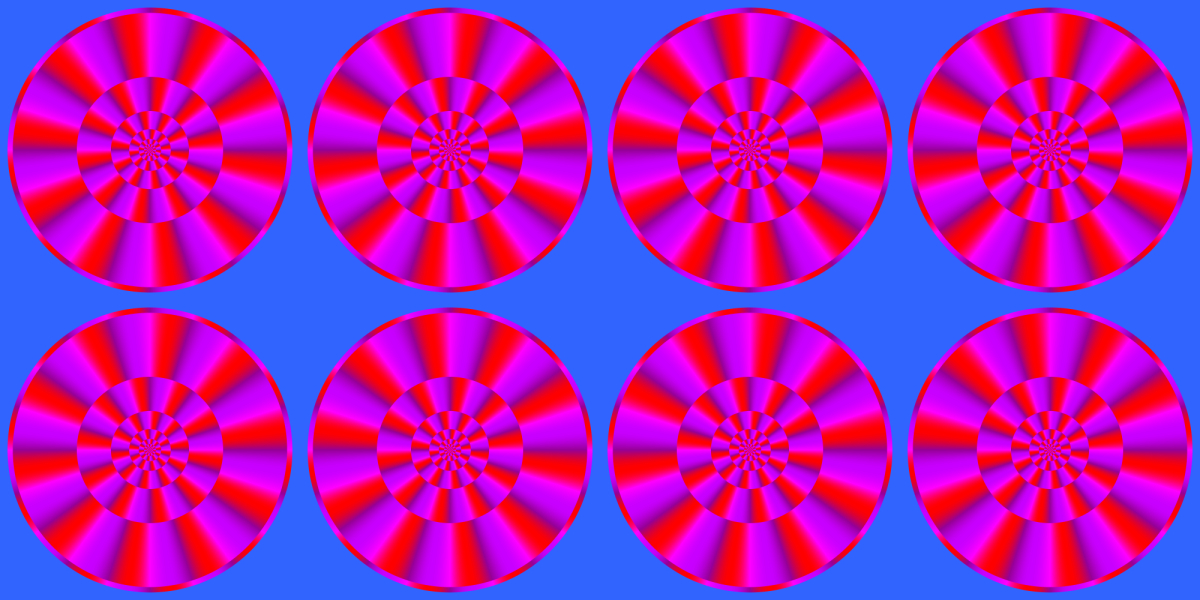
There are a variety of motion illusions in stationary images, e.g.,
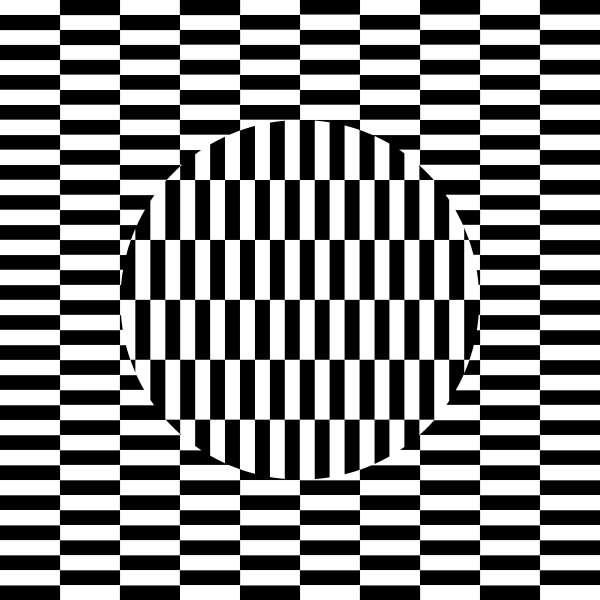
Ouchi-Spillmann illusion
Spillmann, L., Saito, K. and Komatsu, H. (2016). Hajime Ōuchi – a mystery resolved Perception, 45, 371-374.
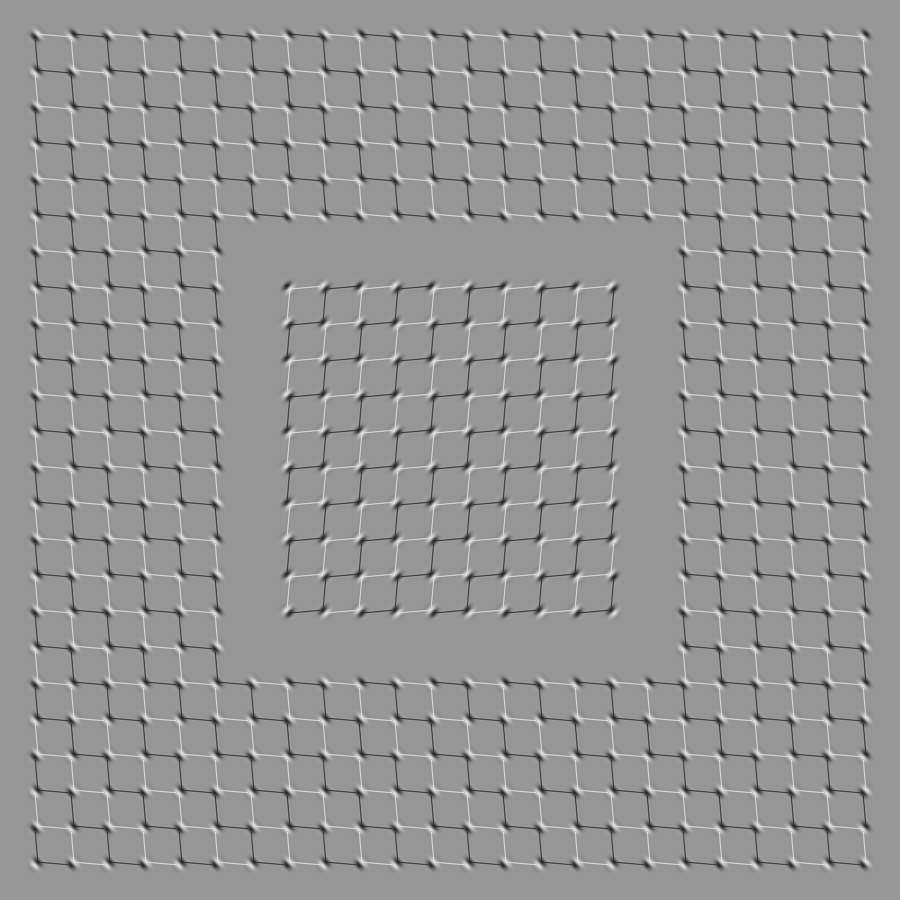
Motion illusions accompanied by tilt illusions
Kitaoka, A. (2017). Amusing science: Science of visual illusion. Tokyo: Nikkan-kogyo Shinbun-sha.
Kitaoka, A. (2010). The Fraser illusion family and the corresponding motion illusions. 33rd European Conference on Visual Perception (ECVP 2010), EPFL, Lausanne, Switzerland, 2010/8/22-26, 8/26 poster publication. Poster(Kitaoka, A. (2010) The Fraser illusion family and the corresponding motion illusions. Perception, 39, Supplement, #61, p. 178)
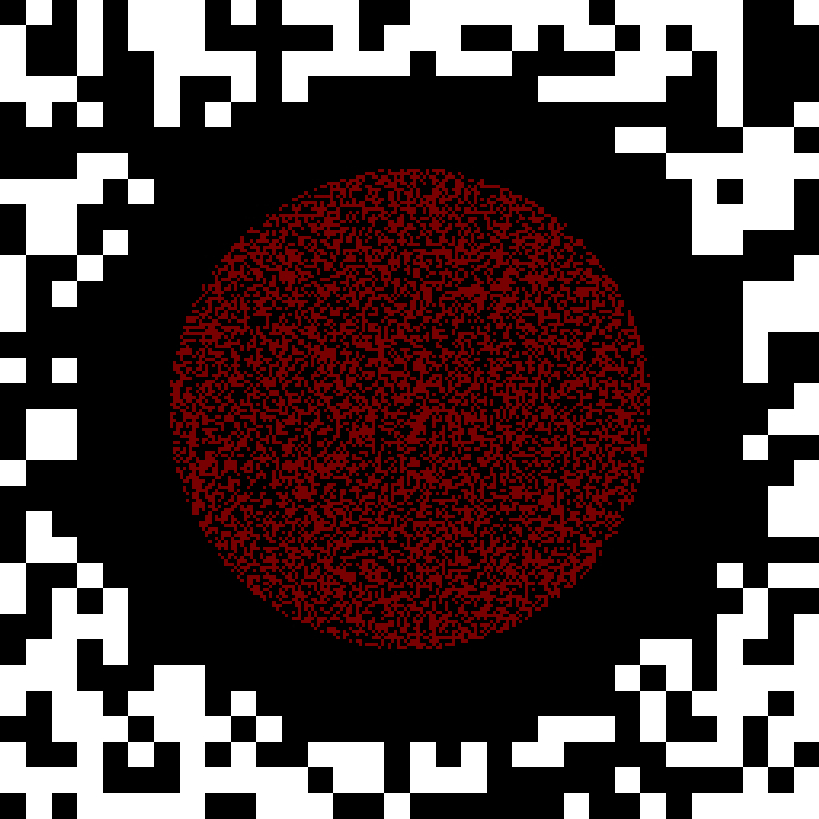
Motion illusion induced by visual delay
Kitaoka, A. and Ashida, H. (2007). A variant of the anomalous motion illusion based upon contrast and visual latency. Perception, 36, 1019-1035.
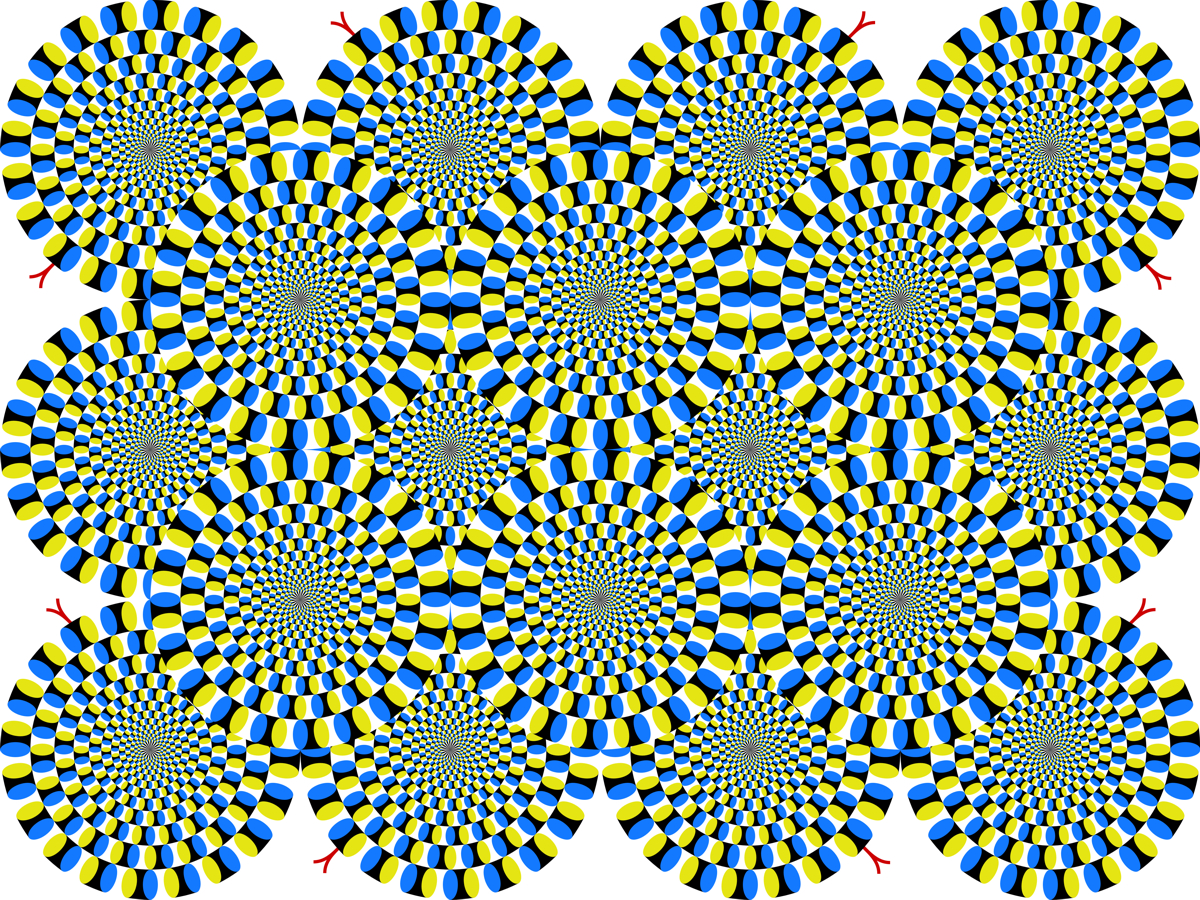
"Rotating snakes"
(Illusory motion along a particular pattern)
Kitaoka, A. (2017). The Fraser-Wilcox illusion and its extension. A. G. Shapiro and D. Todorović (Eds.), The Oxford Compendium of Visual Illusions, Oxford University Press, pp. 500-511.
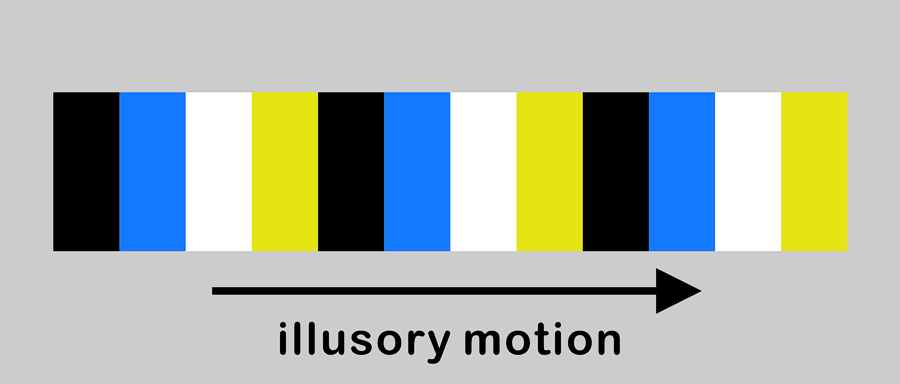
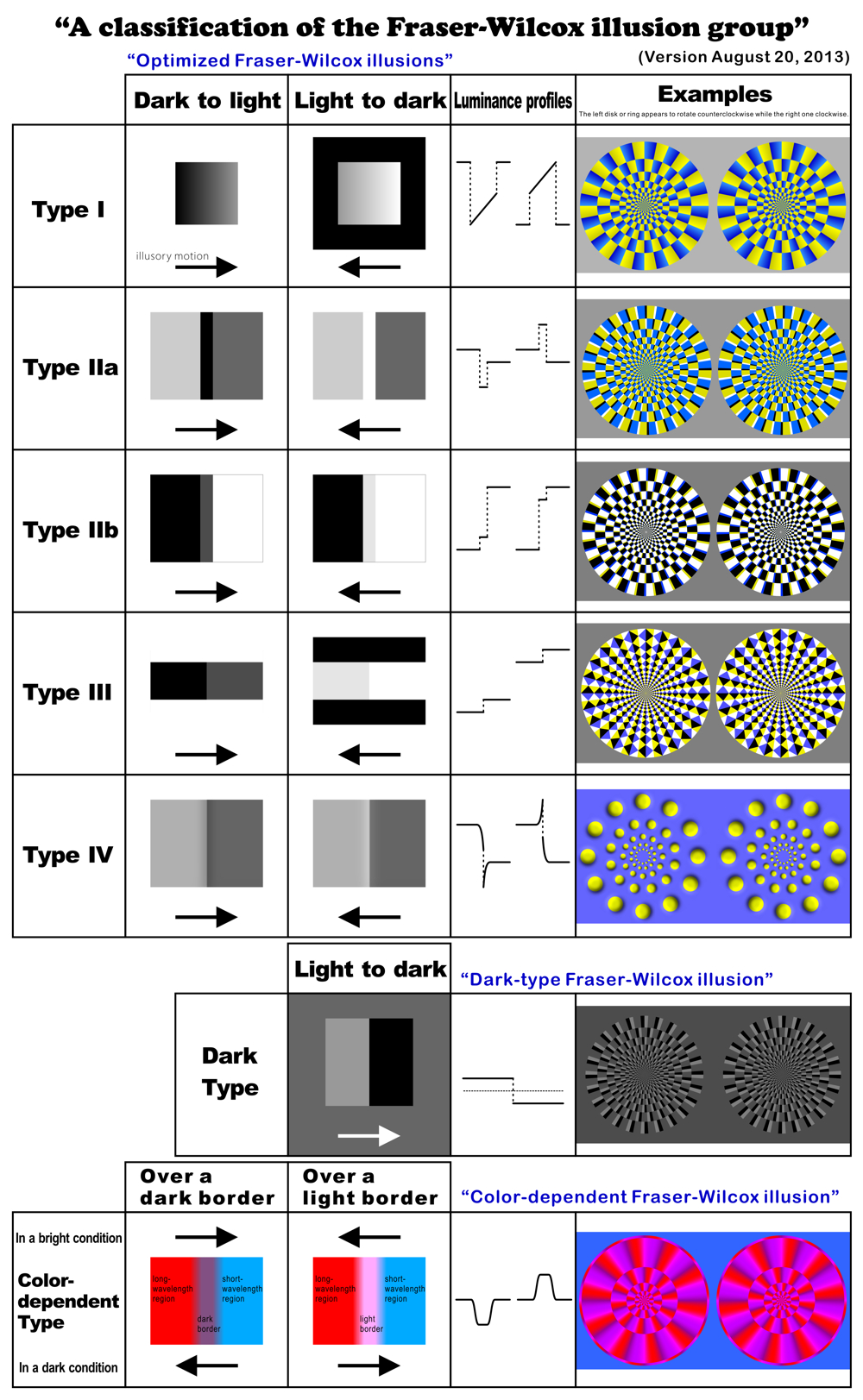
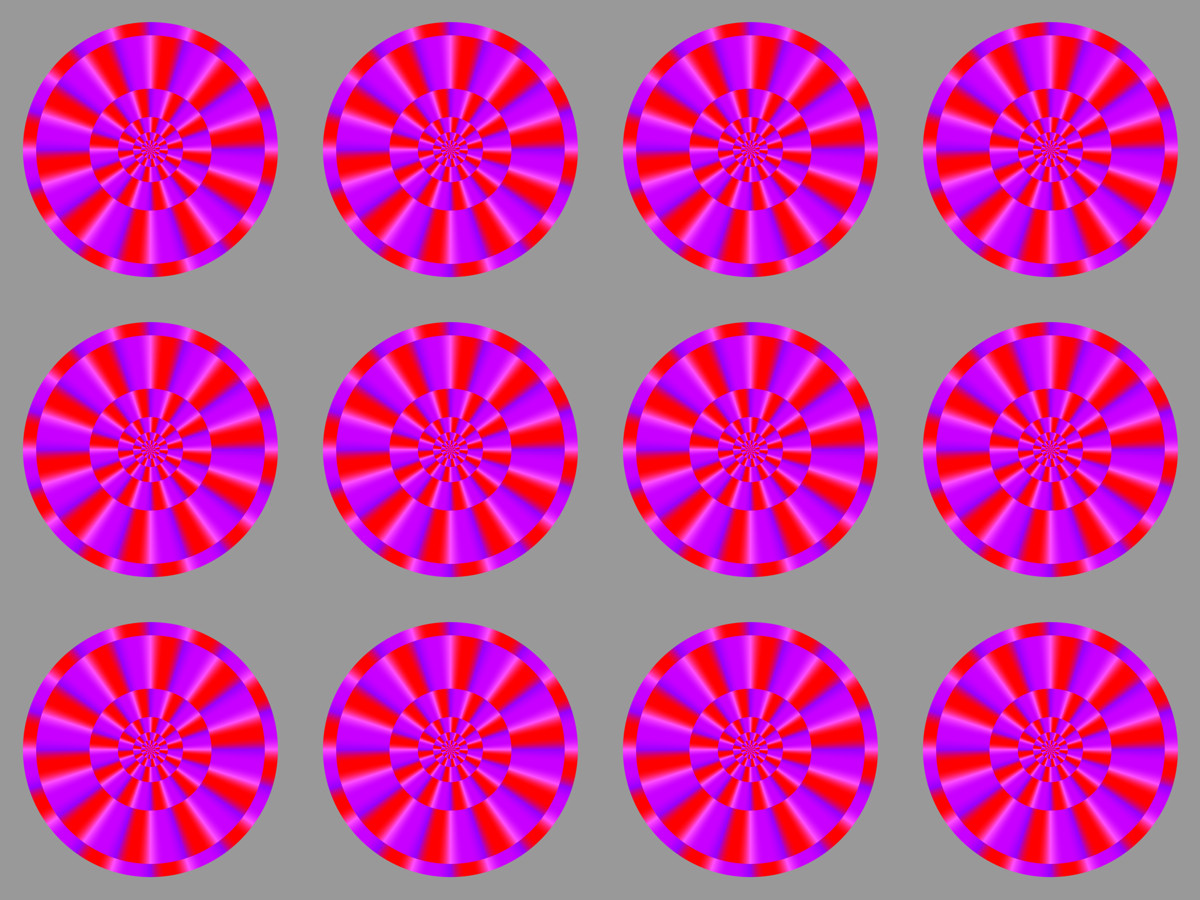
Color-dependent Fraser-Wilcox illusion
Kitaoka, A. (2014). Color-dependent motion illusions in stationary images and their phenomenal dimorphism. Perception, 43(9), 914-925.
This type shows dirmorphism depending on luminance.
Please vote.
— Akiyoshi Kitaoka (@AkiyoshiKitaoka) July 16, 2019

Kitaoka, A. (2014). Color-dependent motion illusions in stationary images and their phenomenal dimorphism. Perception, 43(9), 914-925.
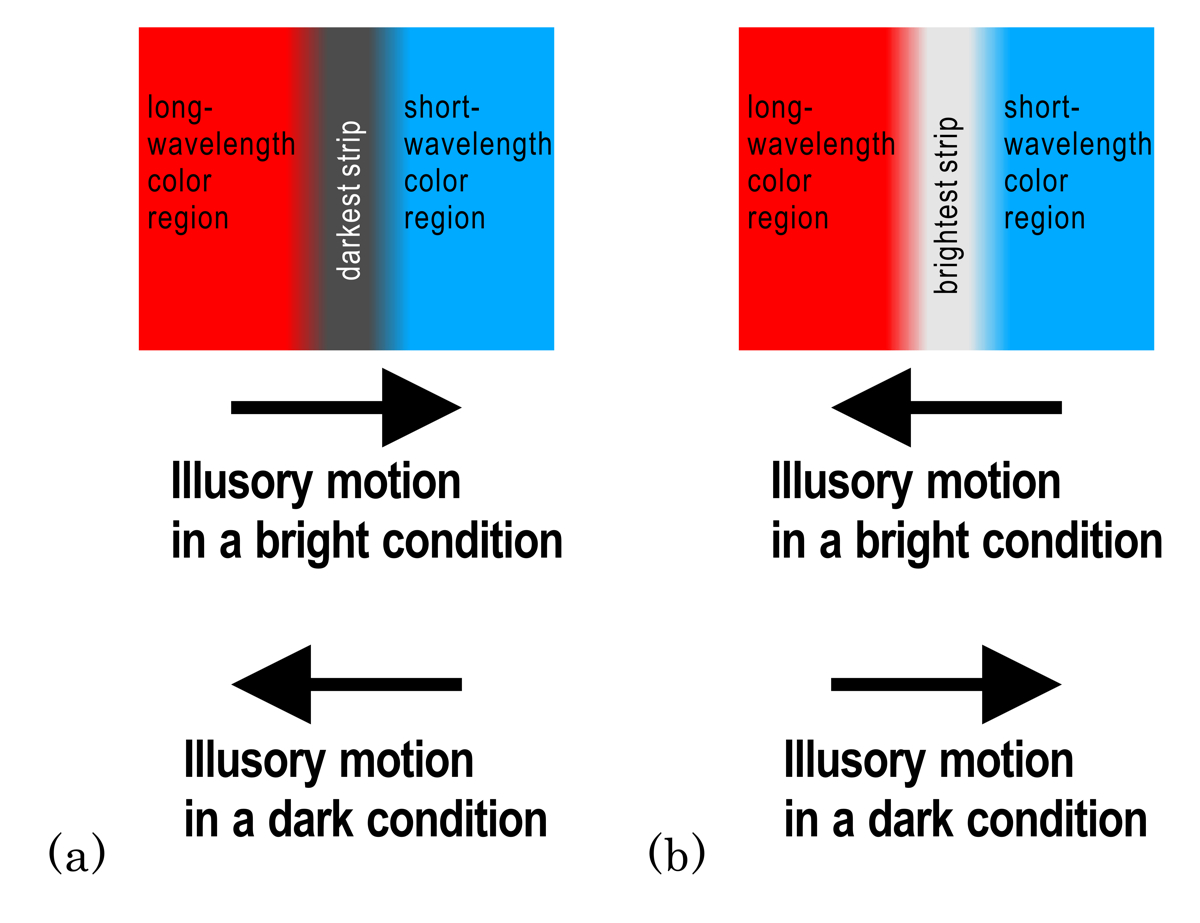
Preliminary finding
When I changed color temperature of illumination in my home, I noticed its effect on the color-dependent Fraser-Wilcox illusion. High color temperature promotes the motion illusion observed in a bright condition, while low color temperature enhances the illusion observed in a dark condition.
Methods
Participants: Three observers participated.
Stimuli: Two different images (prints of A3 size) of the color-dependent Fraser-Wilcox
illusion: (1) Red-purple image; (2) Red-blue image
(1) Red-purple image

(2) Red-blue image
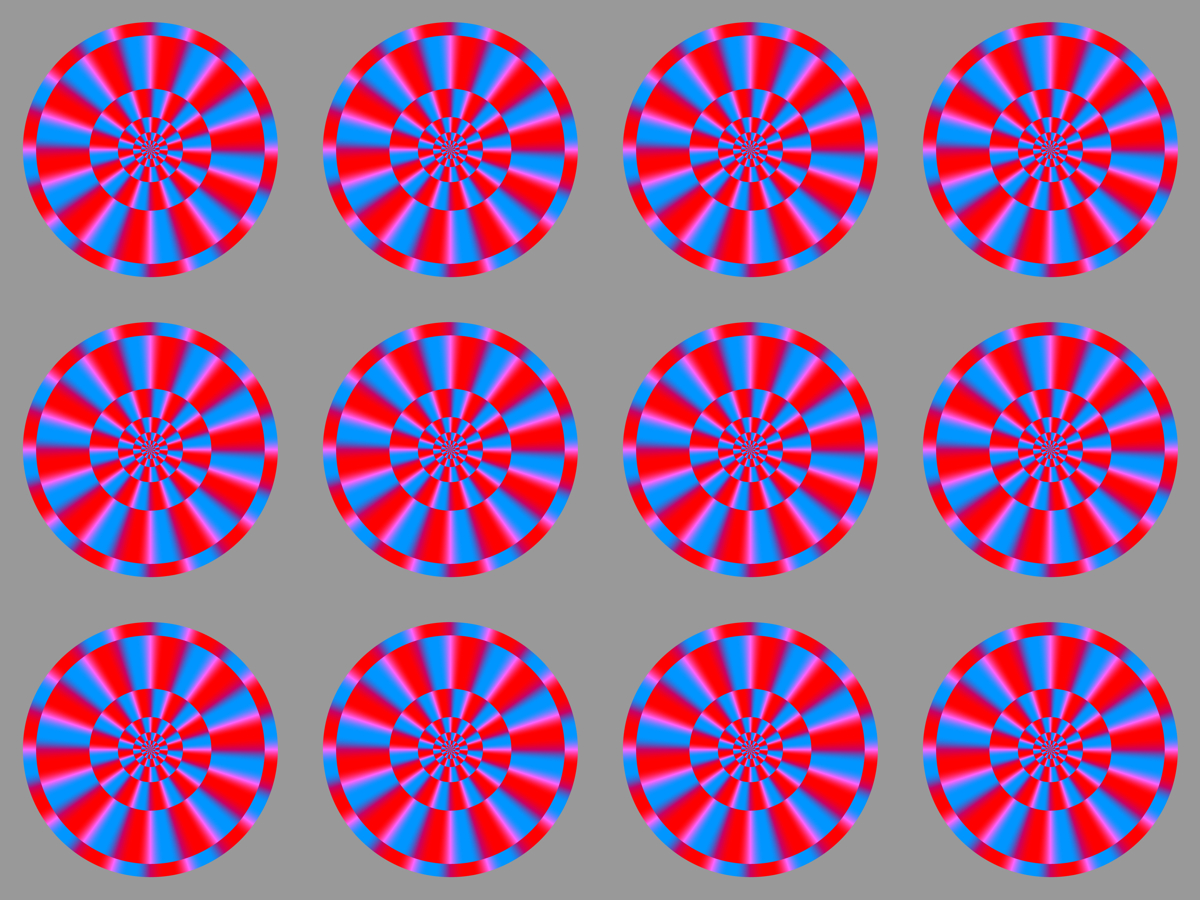
Viewing distance: 50 cm
Apparatus: A dark room where illumination of fluorescent lamps can be controlled for illuminance and color temperature
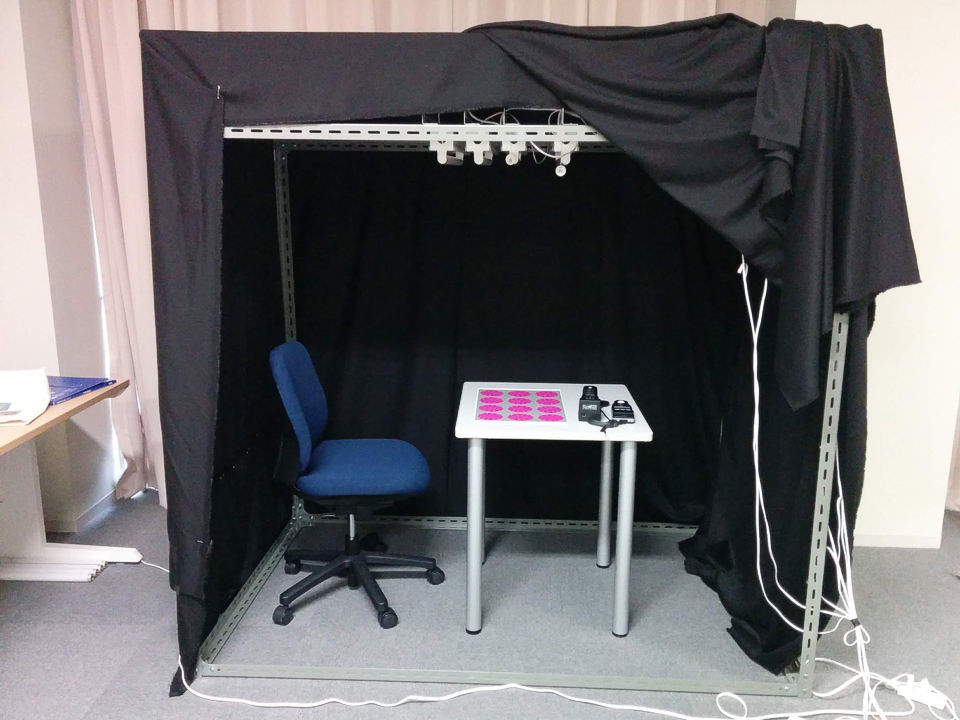
Illuminance condition: 10, 20, 40, 80, 160, 320, 640, 1280 lx
Color temperature condition: 3000K and 6700K
Task: Participants reported the perceived illusory rotation in each condition,
rating as follows.
3: Strong clockwise rotation
2: Clockwise rotation
1: Weak or slight clockwise rotation
0: No motion or jiggling motion
-1: Weak or slight counterclockwise rotation
-2: Counterclockwise rotation
-3: Strong counterclockwise rotation
Procedure: Sessions 3000K and 6700K were tested separately. In each session, participants first adapted to the environment of 10 lx illuminance for 5 minutes. They rated illusion in the 10 lx condition and after that they adapted to the 20 lx condition for 1 minute. They rated illusion in the 20 lx condition and after that they adapted to the 40 lx condition for 1 minute, and so on (ascending trial). A descending trial was followed.
Results
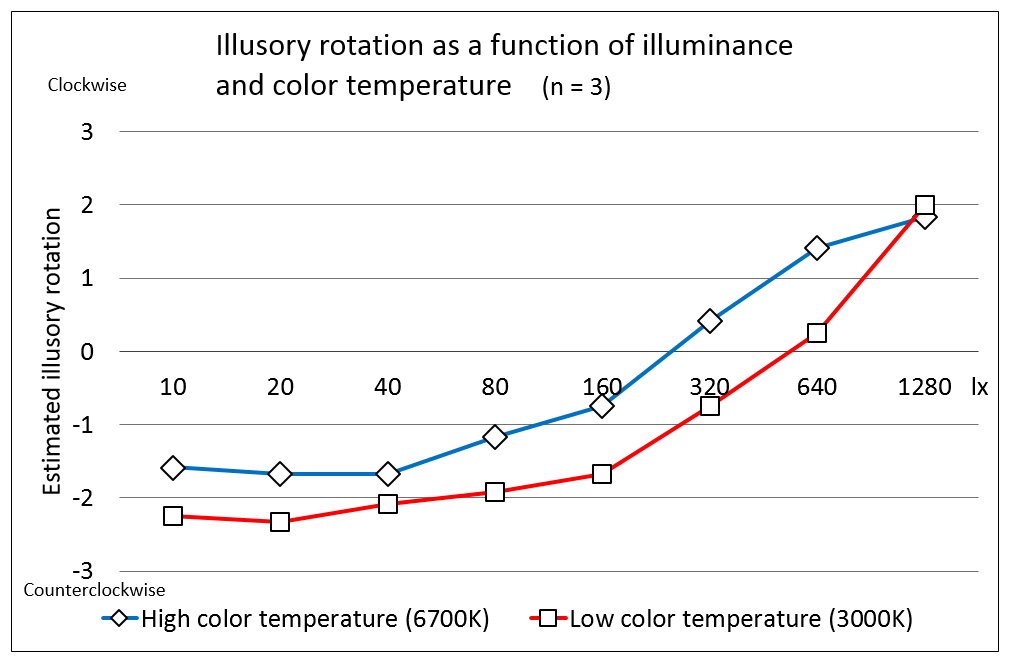
1. Disks appear to rotate clockwise in bright conditions, while they appear to rotate counterclockwise in dark conditions.
2. High color temperature promotes the former, while low color temperature favors the latter.
3. There were individual differences, as follows.
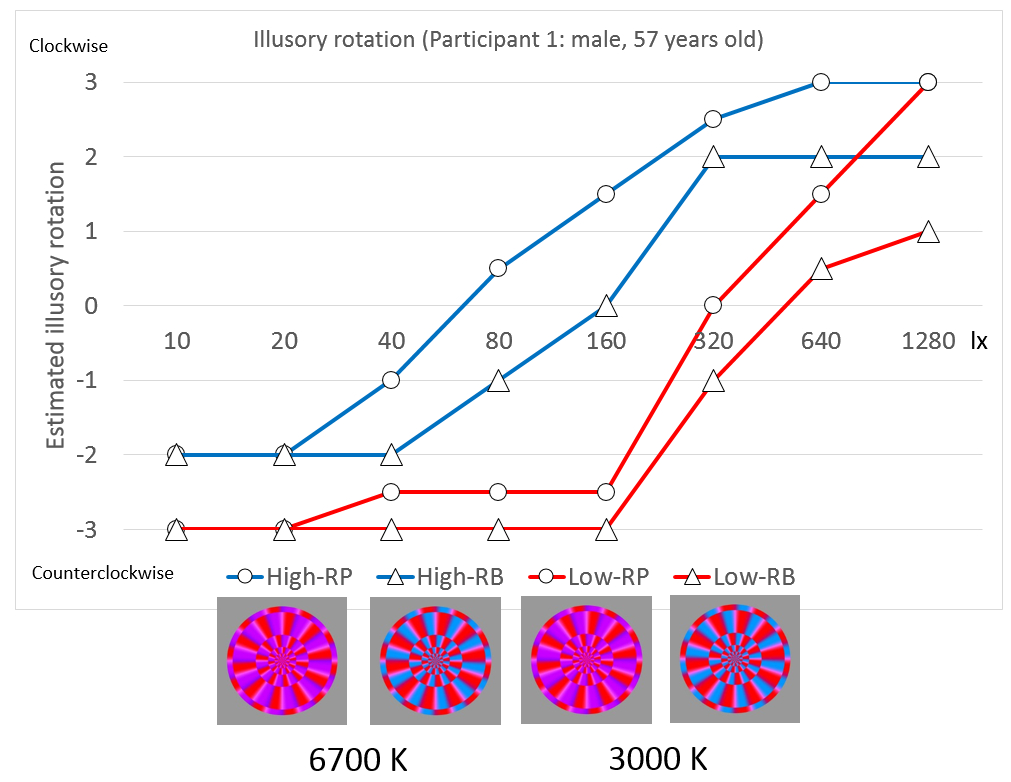
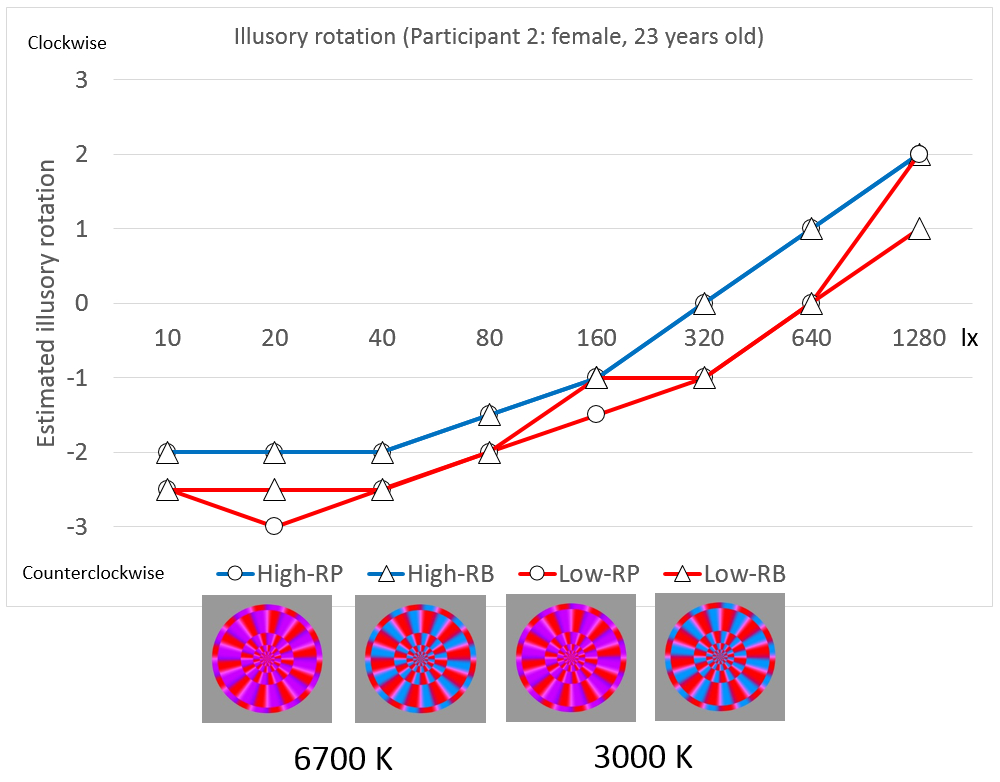
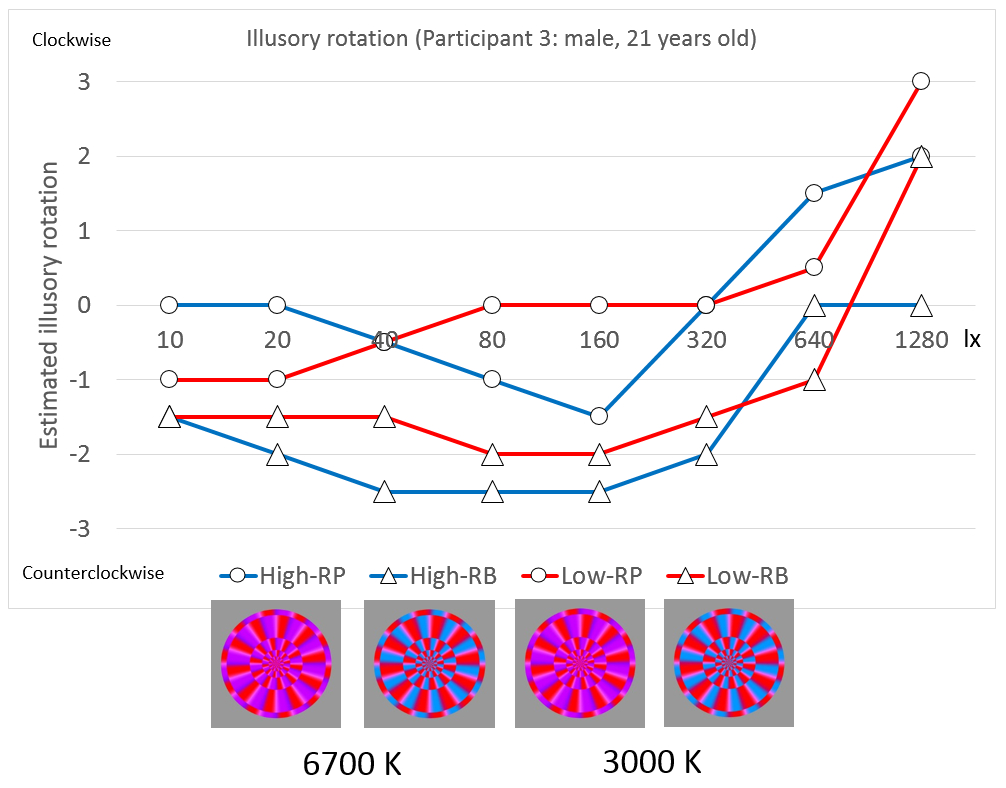
No effect of color temperature for this participant.
More participants should be examined.
Discussion
1. What does this result mean?
According to another observation, changing the color temperature of a display does not have a remarkable effect on this illusion. So, some mechanism of adaptation to environmental color temperature might be involved in this illusion.
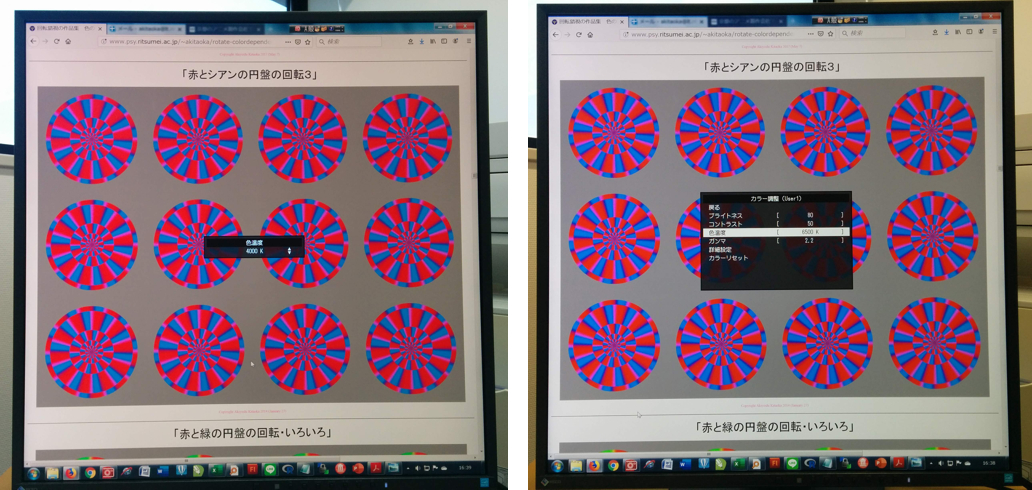
2. What causes the color-dependent Fraser-Wilcox illusion?
This illusion is triggered by saccades, blinks, or jiggling the image. At each triggering event, visual disappearance and emergence, respectively, are suggested to cause the illusion in dark conditions (counterclockwise rotation) and the illusion in bright conditions (clockwise rotation).
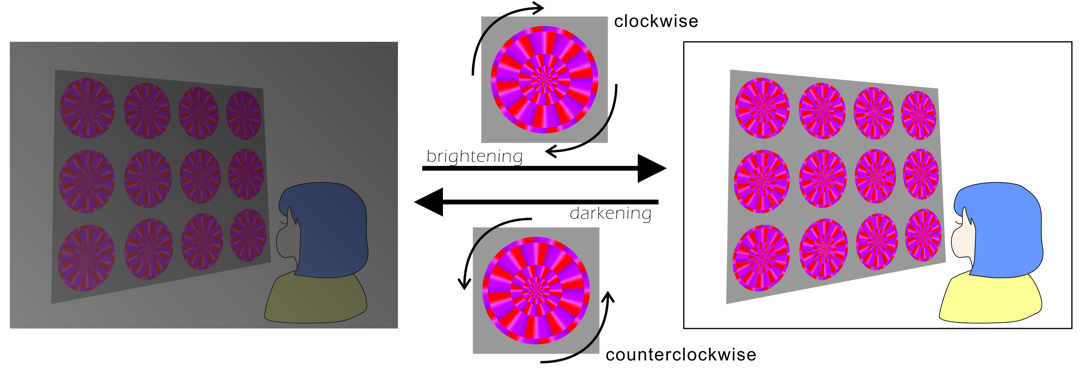
Kitaoka, A. and Yanaka, H. (2013). Reversal of the color-dependent Fraser-Wilcox illusion under a dark condition. Perception 42 (36th) ECVP (Bremen) Abstract Supplement, page 97 (Poster August 27, 2013). Poster PDF
3. What does color temperature affect?
Adaptation to high color temperature promotes the brightening-induced illusory motion, while adaptation to low color temperature favors the darkening-induced illusory motion.
4. Speculation
Evidence: This illusion(s) is not observed in the fovea. This illusion
depends on color. This illusion depends on luminance. This illusion depends
on illuminance. This illusion depends on color temperature.
Then, it might be suggested that rods, S-cones, or ipRGCs might possibly
play some role in the color-dependent Fraser-Wilcox illusion.
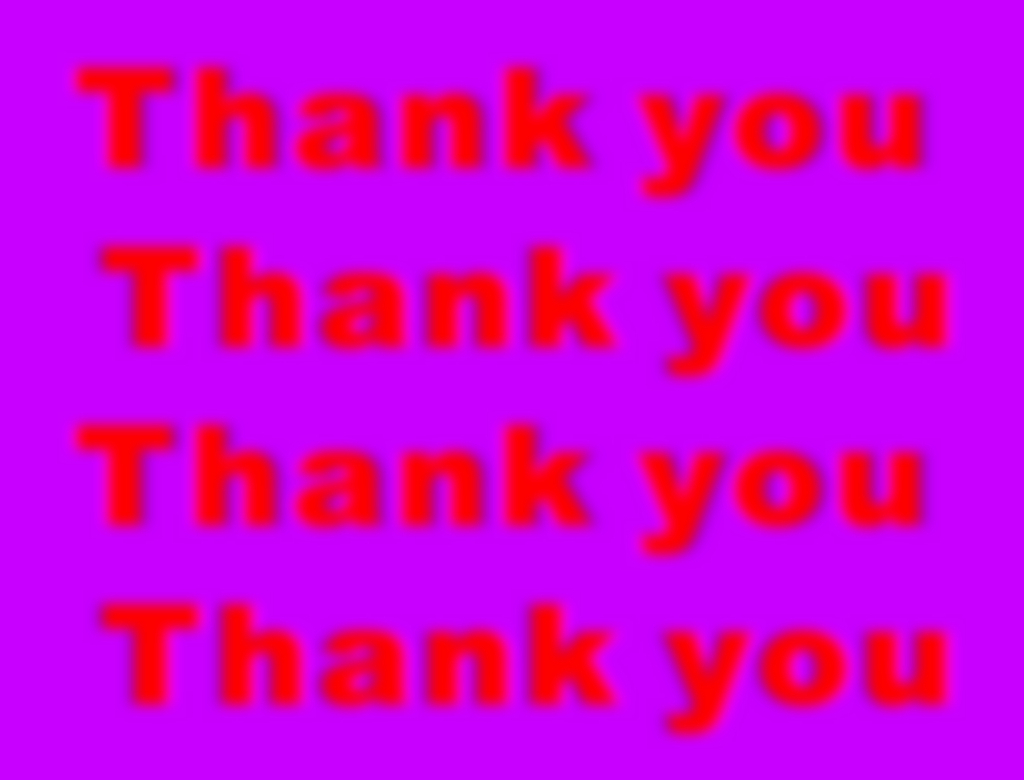
Abstract
The color-dependent Fraser-Wilcox illusion is a motion illusion observed
in stationary images that is characterized by perceptual dimorphism (Kitaoka,
2014). The direction of illusory motion is reversed depending on illuminance
when we observe printed images. Here I report a new finding that this perceptual
dimorphism is affected by color temperature. High color temperature promotes
the motion illusion observed in a bright condition, while low color temperature
enhances the illusion observed in a dark condition.
What underpins them?
I have some idea depending on motion illusion induced by brightness changes (fading-dependent motion illusion: Kitaoka, APCV2014).
Kitaoka, A. (2014). Motion illusion induced by color changes. 10th Asia-Pacific Conference on Vision (APCV), Sunport Takamatsu, Takamatsu, Japan, (Poster July 20, 2014 (P2-16)). Poster MS-Word doc file --- Movie demos
Kitaoka, A. (2015). Color-dependent motion illusions in stationary images: What causes illusory motion? International Symposium on Psychological vs Mathematical Approaches to Optical Illusion (Tokyo Symposium on Optical Illusion 2015), Meiji University, Nakano Campus, Tokyo, Japan, 15:10-16:10 March 5, 2015. Presentation (html)
(GIF)
